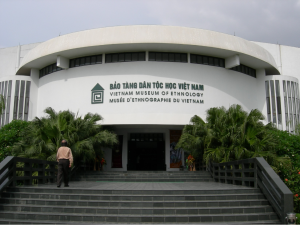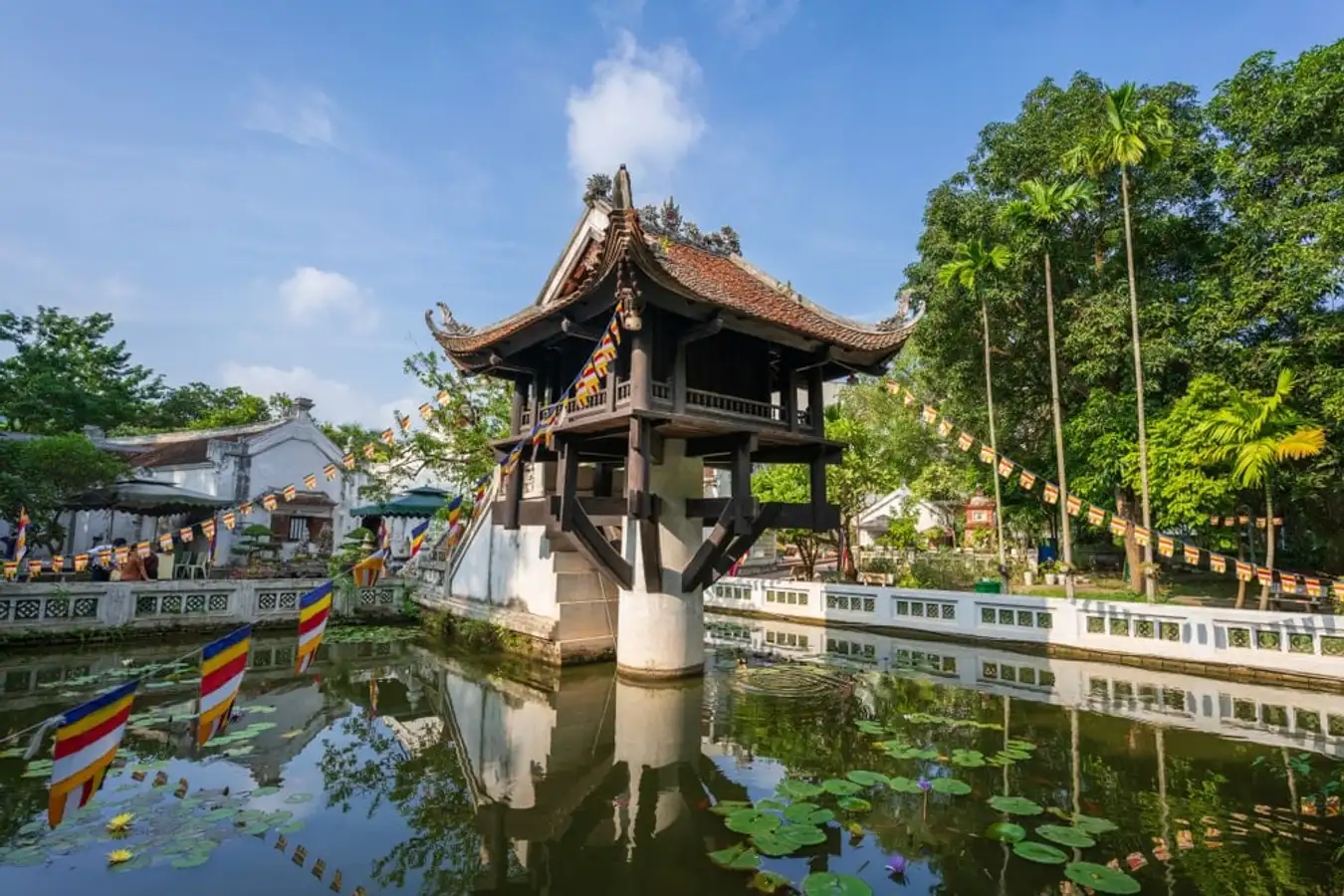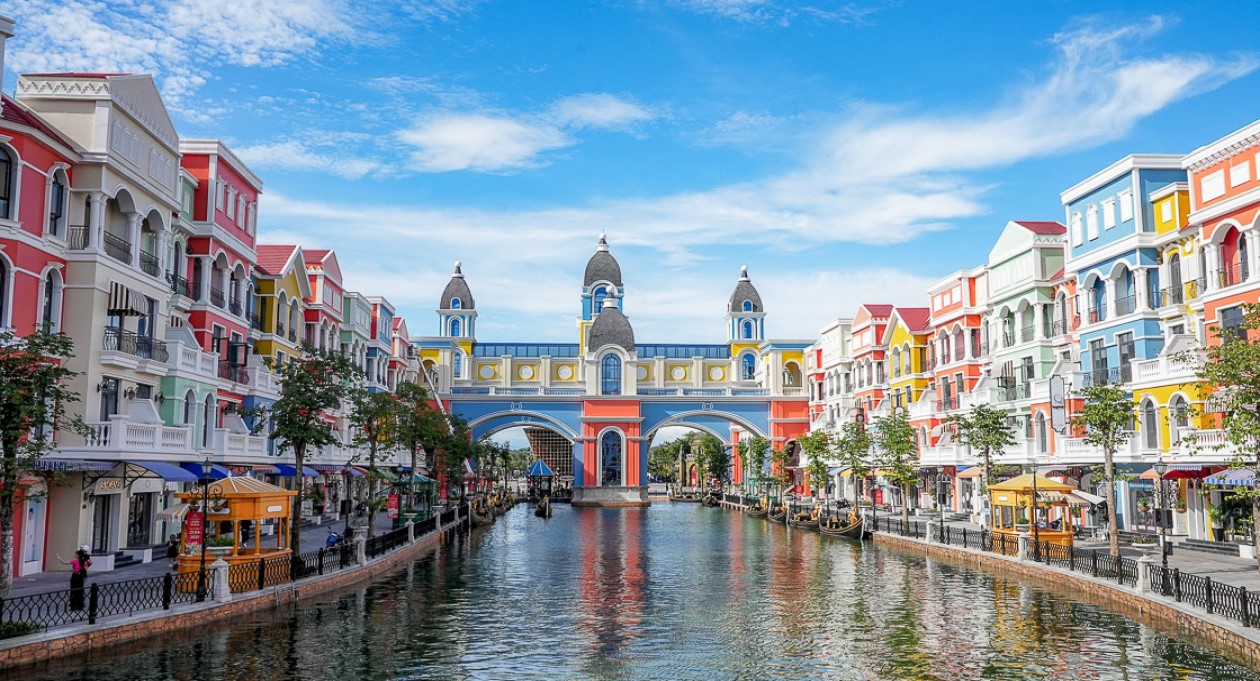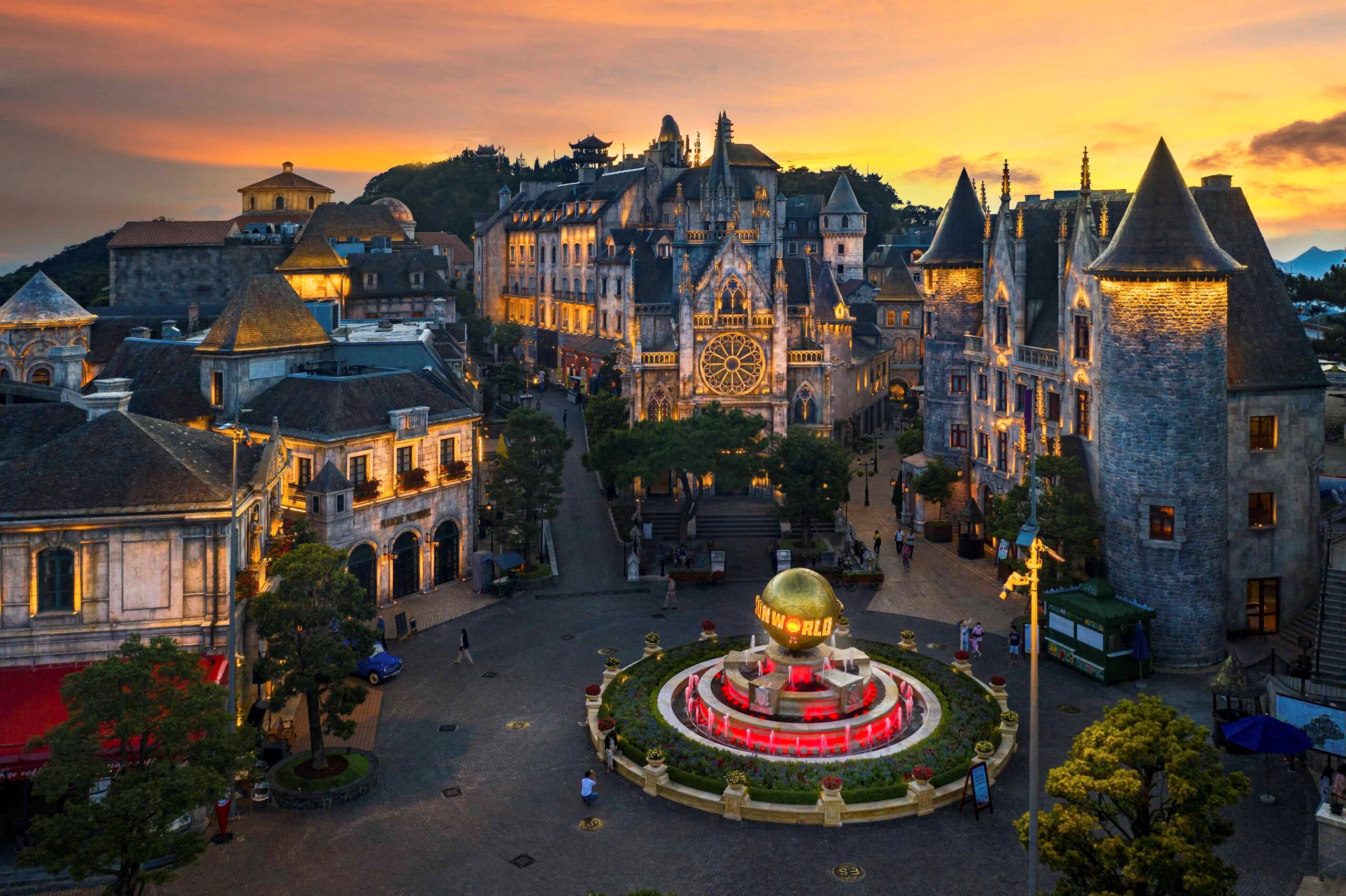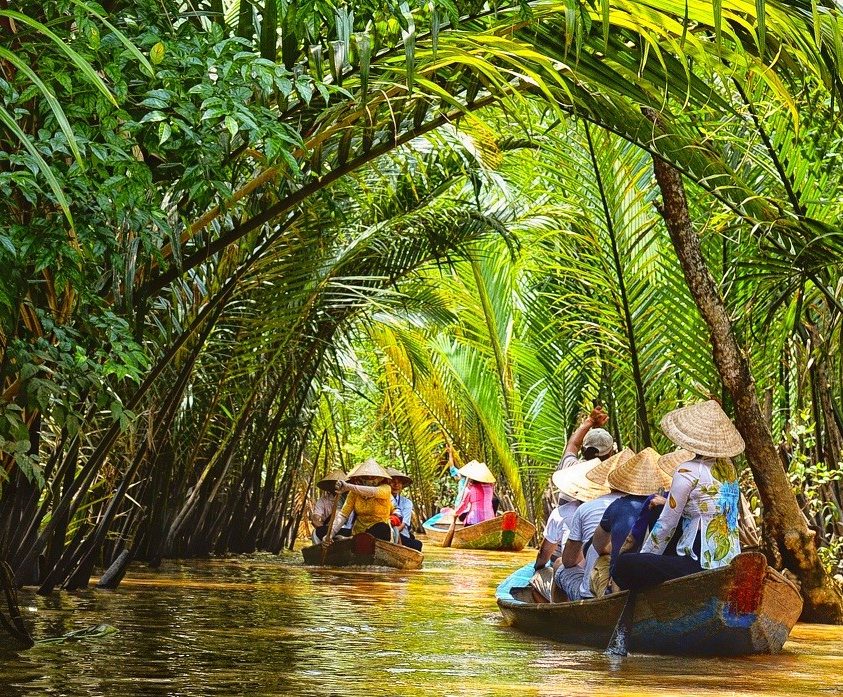French Architecture in Hanoi: A Journey Through Time
Nestled in the heart of Hanoi lies a fascinating world of French architecture that has transformed the city’s landscape into a stunning blend of East and West. From grand public buildings to intimate villas, Hanoi’s French architectural gems serve as a testament to an era that left an indelible mark on Vietnam’s capital. This article embarks on a journey through time, exploring the origins, evolution, and distinctive features of French architecture in Hanoi.

The Origins of French Influence in Hanoi
A Glimpse into the Colonial Era
French architectural influence in Hanoi dates back to the late 19th century, during the French colonial period, when France sought to establish a presence in Southeast Asia. Hanoi was made the capital of French Indochina, becoming a hub for French colonial infrastructure and architectural innovation. French architects were commissioned to design structures that would embody the grandeur of France while adapting to the tropical climate of Vietnam.

Key Historical Events Shaping French Architecture in Hanoi
Key historical events like the completion of the Trans-Indochina Railway in 1910 accelerated urban development and the spread of French influence across Hanoi. The establishment of the French Governor-General’s Palace (now Presidential Palace) in the early 1900s and the Hanoi Opera House in 1911 marked the beginnings of a sophisticated urban plan. By the mid-20th century, Hanoi’s landscape had transformed, with French architecture firmly rooted in the city’s identity.

Distinctive Features of French Colonial Architecture
Signature Elements and Architectural Styles
French colonial architecture in Hanoi is characterized by several unique features. The use of classic columns, large windows with shutters, and iron balconies evoke French elegance, while high ceilings and spacious layouts create an airy feel suited to the warm climate. Many buildings also exhibit Art Deco influences, particularly in the geometric details, a style that became popular in the 1930s.

Cultural Blending in Design
A fascinating aspect of French architecture in Hanoi is its adaptation to Vietnamese culture and climate. Unlike traditional French structures, many colonial buildings in Hanoi incorporate extended eaves, ventilated corridors, and tropical plants, which create cooling effects and enhance comfort. This blend of French elegance and Vietnamese practicality results in architecture that is both beautiful and functional.
Exploring Iconic French Architectural Sites in Hanoi
Hanoi is home to some of Southeast Asia’s most renowned French colonial buildings, each reflecting a unique aspect of French architectural influence.
The Grand Hanoi Opera House
The Hanoi Opera House, completed in 1911, is often considered the crown jewel of French colonial architecture in Hanoi. Inspired by the Palais Garnier in Paris, this majestic structure boasts ornate columns, intricate bas-reliefs, and a stunning central dome. The Opera House not only serves as a cultural venue but also symbolizes the French commitment to creating a sophisticated urban center in Hanoi. Its interiors are equally breathtaking, with high ceilings, chandeliers, and luxurious décor, creating an ambiance reminiscent of Parisian theaters.

St. Joseph’s Cathedral: A Gothic Marvel
Constructed in 1886, St. Joseph’s Cathedral is one of Hanoi’s oldest and most cherished French colonial landmarks. Modeled after Notre-Dame de Paris, the cathedral features striking Gothic architecture, complete with twin bell towers, stained glass windows, and vaulted ceilings. It stands as a monumental symbol of French Catholic influence in Vietnam and is an active place of worship today. The tranquil atmosphere around the cathedral, along with its stunning design, makes it a favorite spot for both locals and tourists.

The Presidential Palace: An Elegant Government Residence
Originally built as the French Governor-General’s Palace, the Presidential Palace is a grand example of classical French architecture adapted for tropical conditions. Its yellow façade, symmetrical layout, and lush gardens showcase the French architectural style with a Southeast Asian twist. While it serves as a government residence today, visitors can still enjoy its exterior and the surrounding Ho Chi Minh Complex, which further highlights the blend of Vietnamese and French history.
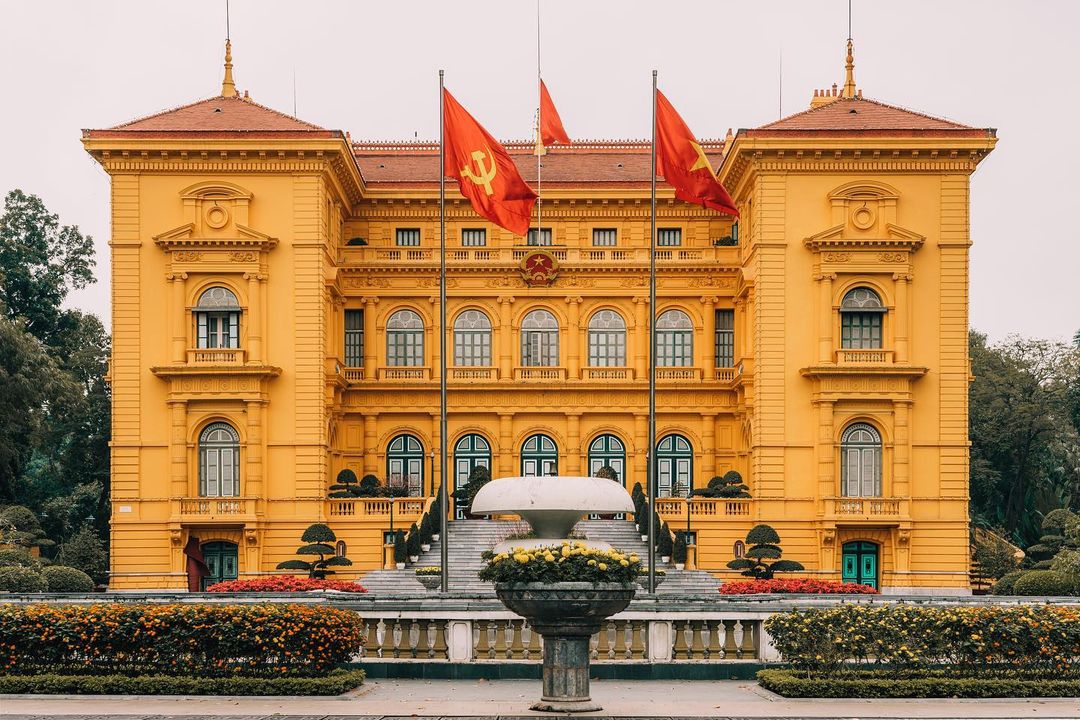
Long Bien Bridge: Engineering and Design Excellence
Designed by the French architect Gustave Eiffel’s company, Long Bien Bridge is both an architectural marvel and a symbol of resilience. Completed in 1903, the bridge spans the Red River and was crucial in connecting Hanoi with other regions during colonial times. This iron bridge has survived numerous wars and remains an icon of Hanoi’s historical landscape. Walking along Long Bien Bridge offers a unique view of Hanoi and a tangible link to the city’s colonial past.

Others of French Architecture in Hanoi
In addition to its well-known landmarks, Hanoi is dotted with lesser-known but equally impressive examples of French architecture.
Lesser-Known French Villas
Hanoi’s Ba Dinh and Hoan Kiem districts are home to many hidden French villas that exhibit charming architectural details. These villas are often painted in pastel hues, with wrought iron balconies, large shuttered windows, and lush gardens. Some have been converted into embassies, cafes, or boutique hotels, offering visitors a glimpse into the quieter, residential side of French colonial Hanoi.

Old Quarters and Their French Flair
While the Old Quarter is primarily known for its Vietnamese heritage, many of its shophouses and commercial buildings reveal subtle French influences. Look closely, and you’ll find French-inspired balconies, arches, and window shutters that hint at the city’s colonial past. This architectural fusion creates a unique charm, blending the old and the new in one vibrant area.
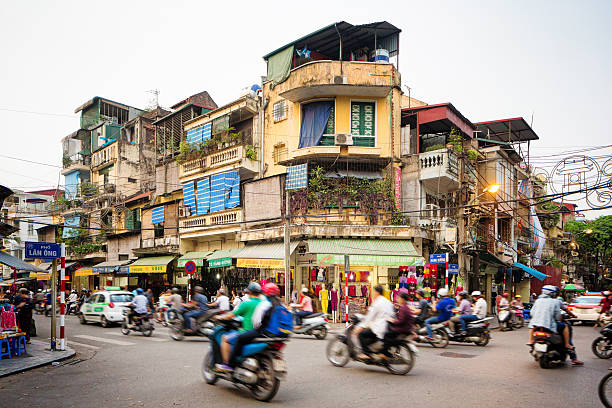
Impact of French Architecture on Modern Hanoi
French colonial architecture has left a lasting impact on Hanoi’s modern landscape. Today, architects in Hanoi often incorporate French-inspired elements into contemporary designs, paying homage to the city’s colonial legacy. This influence is visible in modern buildings with extended balconies, high ceilings, and elegant facades, bridging Hanoi’s historical charm with its urban development.
Preserving French Colonial Heritage
As Hanoi modernizes, preserving its French architectural heritage has become a growing concern. Many colonial buildings are at risk due to urban expansion and a lack of conservation efforts. However, organizations dedicated to preserving Vietnam’s historical architecture have made strides in recent years to restore and protect these structures, ensuring that Hanoi’s unique heritage remains for future generations.

Conclusion
French architecture in Hanoi offers a window into the past, showcasing a period when two distinct cultures came together to create a legacy of beauty and resilience. From grand cathedrals and opera houses to hidden villas and bridges, these structures represent a shared history that continues to shape Hanoi’s identity. Exploring these buildings is more than a sightseeing experience; it’s a journey through time, revealing how French and Vietnamese cultures have harmoniously blended in the heart of Vietnam.
FAQs
1. What are some must-visit French architectural sites in Hanoi?
The Hanoi Opera House, St. Joseph’s Cathedral, and the Presidential Palace are must-visit sites for anyone interested in French colonial architecture.
2. How did French colonialism influence Vietnamese architecture?
French colonialism introduced new architectural styles, blending French elegance with Vietnamese practicality, leading to unique structures adapted to the local climate.
3. Are there any hidden French villas I can explore in Hanoi?
Yes, districts like Ba Dinh and Hoan Kiem have lesser-known French villas, many of which now serve as cafes, hotels, or embassy buildings.
4. What architectural style is the Long Bien Bridge known for?
Long Bien Bridge showcases a unique engineering and design style influenced by Gustave Eiffel’s work, combining functional architecture with industrial aesthetics.
5. How is Hanoi preserving its French architectural heritage?
Conservation efforts by local organizations aim to restore and protect Hanoi’s colonial buildings, despite challenges from urban development pressures.
Related Tours
Our Distinctive Highlights
Related articles

6 Unique Ways to Experience the Long Bien Bridge: Hanoi’s Historic Icon

Ha Giang: A Complete Guide to Attractions and Tips

What Makes Hon Tam Island A Top Site In Nha Trang?
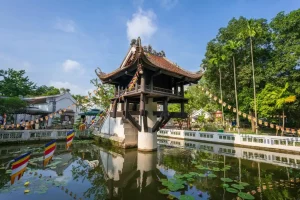
Visit Hanoi: Tips for Choosing the Best Time

Traveling to Vietnam in March: A Complete Guide
